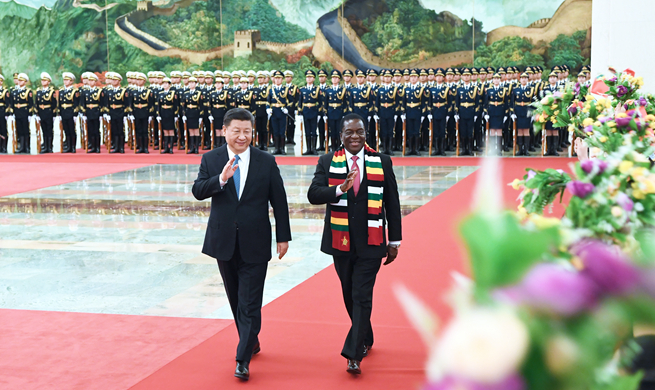by Xinhua writer Chen Jipeng
BEIJING, April 4 (Xinhua) -- Despite strong opposition at home and abroad, Washington on Tuesday unveiled a China tariff list, a typical unilateralist and protectionist practice that will eventually lead America to a dead end.
China has condemned the policy and said it would take corresponding measures.
This is to be expected. The real problem in the United States is not the trade imbalance that the White House insists upon, but that the majority of ordinary people bear the brunt of constant painful economic adjustments while not getting the benefits.
In an essentially political move, U.S. President Donald Trump is knowingly shooting the wrong target by imposing steep tariffs on 50 billion U.S. dollars worth of Chinese imports. The protectionist policies will hurt most those Trump has claimed they will help.
Trump has cited perceived trade imbalances as the rationale for targeting Chinese exports, claiming that such policies would bring jobs back to the United States. However, the numbers, upon a more thorough examination, do not really support such a claim.
Deutsche Bank said in a recent report that when the sales of the Chinese subsidiaries of U.S. multinationals are taken into consideration, the difference between trade flows in the two directions becomes modest.
Statistics from the U.S. Bureau of Economic Analysis show the total sales of U.S. firms in China was about 372 billion dollars in 2015, comprising 223 billion dollars by their subsidiaries in China and 150 billion dollars through exports from America to China. The 223 billion dollars consist of nearly 171 billion dollars of manufactured goods and 51 billion dollars of services.
The number in the opposite direction was 402 billion U.S. dollars in 2015, including mostly exports and a modest direct sales of 10 billion dollars. The U.S. has a clear advantage in sectors such as IT, chemicals and transport equipment.
The trade imbalance is also partly a result of accounting practices. Overall values of iPhones going to the United States are counted as Chinese exports, but most of the value-added goes to Apple in America and key component suppliers in Japan and South Korea.
Based on comparative advantage, trade generally leads to finer division of labor and increased productivity. Nevertheless, we have to acknowledge that trade in a certain single sector may produce winners and losers. In the United States, some industries are bearing the brunt of traditional jobs becoming obsolete faster and the painful adjustments.
However, in the big picture, international trade overall remains mutually beneficial. While the traditional sectors are facing challenges, jobs are being created in new sectors in the United States thanks to the expansion of the Chinese market.
Yet, something has indeed gone wrong. This is reflected in growing income disparity. A report by the Institute for Policy Studies, a think tank based in Washington, says the richest three people in the United States collectively hold more wealth than the bottom 50 percent of the U.S. population.
The real problem is while the IT and financial giants harvested the benefits, the real income of the majority, including the middle class, has been stagnant.
It calls for strong leadership to make growth inclusive, but not strong in the sense of resorting to aggressive and cheap protectionist moves. Trump's policies will only make it worse, with or without the retaliations, which are to be expected.
Finally, it should be obvious that any attempt to curb the development of another country through unilateral trade aggression does not bode well. They are counterproductive and should not be tolerated.

















